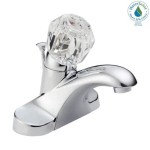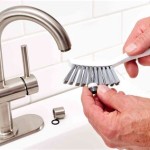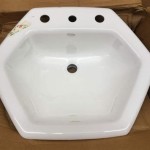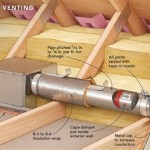Bathroom Sink Still Clogged After Snake: Troubleshooting and Solutions
A clogged bathroom sink can be a significant inconvenience. While a plumbing snake, also known as an auger, is often the first line of defense against such blockages, it's not always a guaranteed solution. The persistence of a clog even after snaking indicates that the problem is either more complex than initially anticipated or was not properly addressed during the snaking process. This article examines the potential reasons behind a persistent bathroom sink clog despite using a snake and provides a comprehensive troubleshooting guide to resolve the issue.
Understanding Common Causes of Persistent Clogs
Several factors can contribute to a bathroom sink remaining clogged even after using a plumbing snake. These include the type of blockage, the location of the blockage, and the effectiveness of the snaking technique employed. Addressing each of these areas systematically can help pinpoint the root cause of the problem.
One common culprit is the accumulation of hair, soap scum, and other debris that gradually builds up within the drainpipe. This amalgamation can form a dense, sticky mass that is difficult for a snake to effectively break apart or dislodge. The snake might simply bore a hole through the clog, leaving the bulk of the blockage intact, resulting in the water draining slowly or not at all.
The location of the clog also plays a crucial role. A blockage located deep within the drainpipe, particularly near the wall where the sink drain connects to the main plumbing line, can be challenging to reach with a standard snake. The snake might not be long enough, or the angle of the drainpipe might make it difficult to navigate the snake to the point of obstruction.
Another potential reason for a persistent clog is the presence of foreign objects lodged in the drain. Items such as jewelry, toothpaste caps, or small toys can accidentally fall into the sink and become trapped in the drainpipe. A snake might not be able to effectively grip and remove these objects, especially if they are irregularly shaped or firmly wedged in place.
Furthermore, the effectiveness of the snaking technique is paramount. A snake must be used correctly to effectively clear a clog. Simply inserting the snake and rotating it a few times might not be sufficient. The snake needs to be advanced aggressively through the blockage, using a combination of rotation and pushing to break it up or pull it out. If the technique is not adequate, the clog will persist.
Diagnosing the Problem: A Step-by-Step Approach
To effectively address a persistent clog, a systematic diagnostic approach is necessary. This involves ruling out potential causes one by one until the underlying problem is identified.
First, visually inspect the sink and drain opening for any obvious obstructions. Check for hair, soap scum, or other debris that might be visible. Remove any easily accessible materials to see if this resolves the clog.
Next, examine the P-trap, the curved pipe located beneath the sink. This trap is designed to catch debris and prevent sewer gases from entering the home. Loosen the slip nuts on either side of the P-trap and carefully remove it. Empty the contents into a bucket and inspect it for any obstructions. Clean the P-trap thoroughly before reassembling it.
If the P-trap is clear, the next step is to re-snake the drainpipe. However, this time, pay close attention to the technique used. Insert the snake slowly and deliberately, rotating it continuously as it advances. When resistance is encountered, apply firm pressure and continue rotating to break through the blockage. If the snake encounters a hard object, attempt to hook it and pull it back out. If the snake is able to pass through the drainpipe without encountering any resistance, it indicates that the clog is located further down the line.
Consider using a different type of snake. A thicker, more robust snake might be necessary to tackle stubborn clogs. Alternatively, a snake with a different head attachment, such as a corkscrew or a retrieving tool, might be more effective at gripping and removing the blockage. The choice of snake depends on the suspected nature of the clog and the configuration of the drainpipe.
If snaking proves ineffective, a plumbing camera can be used to visually inspect the drainpipe. This allows for a precise assessment of the location and nature of the clog. A plumbing camera can also reveal any structural issues within the drainpipe, such as cracks or collapses, that might be contributing to the problem.
Alternative Solutions to Consider
When traditional snaking methods fail, other solutions can be explored to dislodge or dissolve the persistent clog. These alternatives range from using chemical drain cleaners to employing more advanced plumbing techniques.
Chemical drain cleaners are a readily available option for dissolving clogs. However, it's essential to exercise caution when using these products, as they can be highly corrosive and harmful to both the plumbing system and the environment. Always follow the manufacturer's instructions carefully and wear appropriate protective gear, such as gloves and eye protection. Avoid using chemical drain cleaners as a first resort, and never mix different types of drain cleaners, as this can create dangerous fumes. Repeated use of chemical drain cleaners can damage pipes and contribute to future clogs.
Another alternative is to use a wet/dry vacuum to attempt to suck out the clog. Place the hose of the vacuum over the drain opening, creating a tight seal. Turn on the vacuum and allow it to run for several minutes, alternating between sucking and pausing. This method is most effective for dislodging loose debris or objects that are not firmly embedded in the drainpipe.
For more stubborn clogs, consider using a pressurized air blaster. These devices use compressed air to force water through the drainpipe, dislodging the blockage. Air blasters are generally more effective than chemical drain cleaners and less damaging to the plumbing system. However, it's important to use them cautiously to avoid creating excessive pressure, which could damage the pipes.
Hydro jetting is a more advanced plumbing technique that uses high-pressure water streams to clear clogs. This method is typically employed by professional plumbers and is particularly effective for removing stubborn blockages and clearing grease buildup from drainpipes. Hydro jetting requires specialized equipment and expertise, so it's not a DIY solution.
In situations where the clog is located deep within the drainpipe or the plumbing system is old and prone to recurring problems, it might be necessary to replace the affected section of pipe. This is a more invasive solution, but it can be the most effective way to permanently resolve the issue. Pipe replacement should be performed by a qualified plumber to ensure that the work is done correctly and in accordance with local plumbing codes.
If all other attempts to clear the clog fail, it's recommended to consult a professional plumber. A plumber has the expertise, experience, and specialized equipment to diagnose and resolve even the most challenging plumbing problems. They can accurately assess the situation, identify the root cause of the clog, and implement the appropriate solution.
Preventive measures are crucial for avoiding recurring clogs. Regularly flush the drain with hot water to help dissolve grease and soap scum. Use a drain strainer to catch hair and other debris before they enter the drainpipe. Avoid pouring grease or oil down the drain, as these substances can solidify and contribute to clogs. Periodically clean the P-trap to remove any accumulated debris. By taking these preventative steps, the likelihood of future clogs can be significantly reduced.
Addressing a persistent bathroom sink clog after using a snake requires a methodical approach that involves identifying the potential causes, diagnosing the problem accurately, and implementing the appropriate solutions. While some clogs can be resolved with DIY methods, others might require professional assistance. By understanding the underlying causes of clogs and employing effective troubleshooting techniques, the inconvenience of a clogged bathroom sink can be minimized.

When Snaking A Drain Doesn T Work Ben Franklin Plumbing

Why Is My Sink Still Clogged After Snake Tiktok Search

Clear A Sink Clogged Past The Trap In Minutes Our Recipes For Success

How To Clear A Clogged Drain Reviews By Wirecutter

Cost For A Plumber To Snake Drain In 2024 Forbes Home

How To Unclog Your Bathroom Sink 5 Diy Solutions

How To Snake A Drain Sink Tub Toilet More

Why Is My Sink Clogged Mike Diamond

How To Unclog A Slow Running Bathroom Sink Drain 10 Options
How To Unclog A Sink 4 Easy Ways
Related Posts







